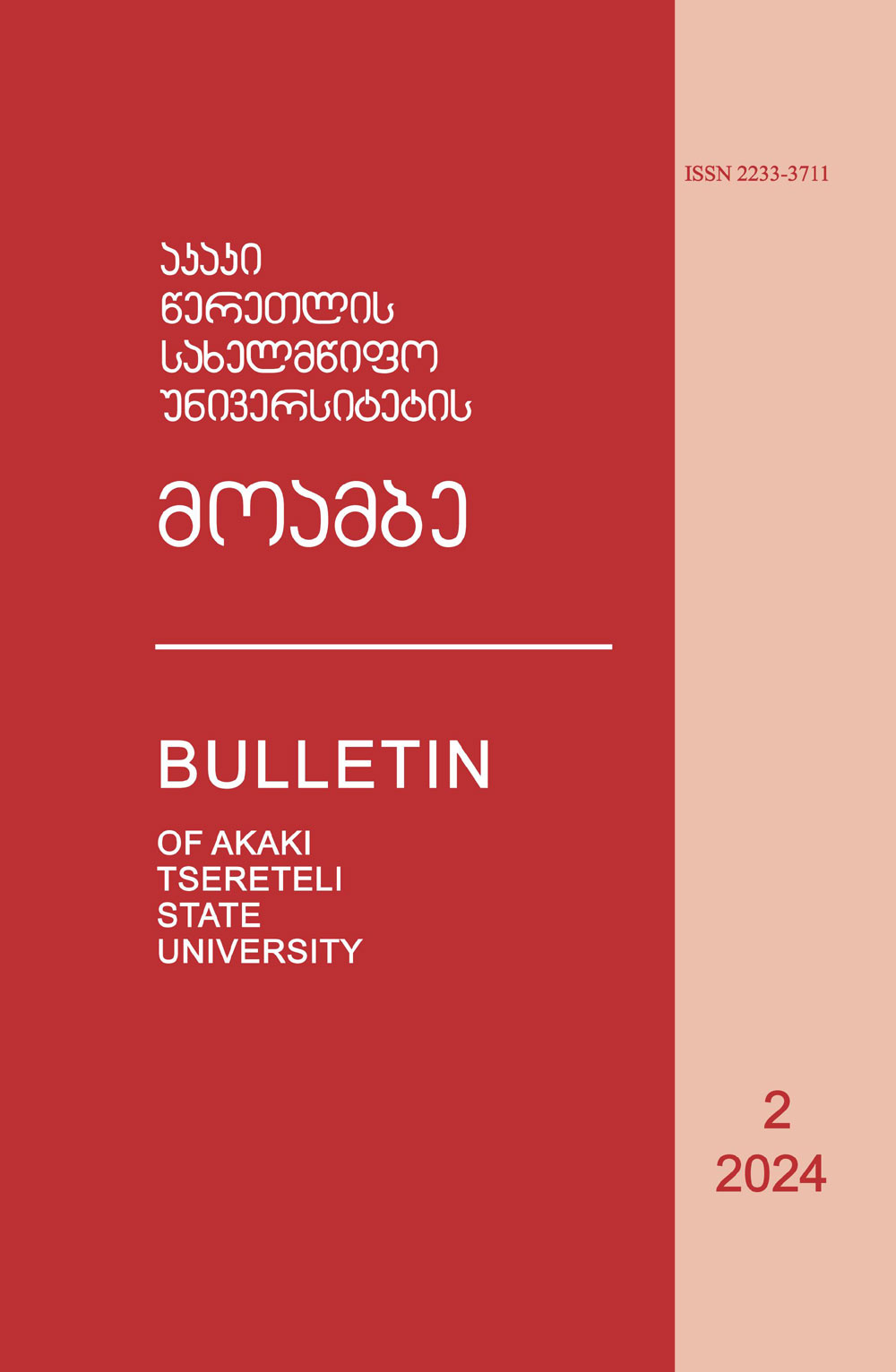The technology of gluten-free muffins enriched with flax and chickpea flour
DOI:
https://doi.org/10.52340/atsu.2024.2.24.02Keywords:
gluten, gluten-free flour product, gluten-free diet, gluten-free raw materialsAbstract
The current treatment method for people with celiac disease is a lifelong gluten-free diet, which has led to an increased demand for gluten-free flour products. In the production of gluten-free products, rice, buckwheat, and corn are mainly used as gluten flours. Making muffins based on a gluten-free flour composition mixture developed based on buckwheat, rice, and corn flour, and increasing its nutritional value by using flax and chickpea flours are relevant nowadays. The goal of the work is to develop a recipe and technology for gluten-free muffins enriched with flax and chickpea flour for people with celiac disease. An agglutinous composite flour mixture is offered: 1. Rice flour + buckwheat flour + flax flour; 2. Rice flour + corn flour + chickpea flour with the following ratio of components 40:30:30. The muffins prepared from both composite mixtures had quality parameters corresponding to the standard. can be included in the gluten-free diet of celiac patients.
References
სადუნიშვილი, თ. მაისაია, ი. 2022. „საქართველო უძველესი სოფლის მეურნეობის ქვეყანაა“. მაცნე. ისტორიის, არქეოლოგიის, ეთნოლოგიისა და ხელოვნების ისტორიის სერია. ტ. 2, 2022: 126-138. http://macne.org.ge/index.php/macne/article/view/74/115
Simón, E. Molero-Luis, M. Fueyo-Díaz, R. 2023. The Gluten-Free Diet for Celiac Disease: Critical Insights to Better Understand Clinical Outcomes, Nutrients https://doi.org/10.3390/nu15184013
Sapone et al. 2012. “Spectrum of gluten-related disorders: consensus on new nomenclature and classific ation.” BMC Medicine http://www.biomedcentral.com/1741-7015/10/13
Shaista, Jabeen. Azmat, Ullah Khan. Waqas, Ahmad. Mansur-ud-Din, Ahmed. Muhammad, Asif Ali. Summer, Rashid. Anjum, Rashid. Javad, Sharifi-Rad. 2022. "Development of Gluten-Free Cupcakes Enriched with Almond, Flaxseed, and Chickpea Flours", Journal of Food Quality, Article ID 4049905, 11 pages https://doi.org/10.1155/2022/4049905
Yamsaengsung, R. Berghofer, E. Schoenlechner, R. 2012. “Physical properties and sensory acceptability of cookies made from chickpea addition to white wheat or whole wheat flour compared to gluten-free amaranth or buckwheat flour.“ International Journal of Food Science and Technology, Vol. 47(10), 2012: 2221-2227. https://doi.org/10.1111/j.1365-2621.2012.03092.x]
Tomić, Jelena. Škrobot, Dubravka. Popović, Ljiljana. Dapčević-Hadnađev, Tamara. 2022. Gluten-Free Crackers Based on Chickpea and Pumpkin Seed Press Cake Flour: Nutritional, Functional and Sensory Properties. Food Technology & Biotechnology. Vol. 60(4), 2022: 488–498. doi: 10.17113/ftb.60.04.22.7655
Zhang, Yiqinb. Wang, Weiquna. Li. 2020. Yonghuib Advanced properties of gluten-free cookies, cakes, and crackers: Xu, Jingwena; Trends in Food Science & Technology. Vol. 103, 2020: 200-213. DOI 10.1016/j.tifs.2020.07.017
Silagadze, M.A. Gachechiladze, S.T. Pruidze, E.G. Khetsuriani, G.S. Khvadagiani, Kh.B. Pkhakadze, G.N. 2017. Development of new-generation dietary bread technologies by using soya processing products, Annals of Agrarian Science. Vol. 15(2), 2017: 177-180. https://doi.org/10.1016/j.aasci.2017.05.018
Prakriti, Jnawali. Vikas, Kumar. Beenu, Tanwar. 2016. „Celiac disease: Overview and considerations for development of gluten-free foods.” Food Science and Human Wellness, Vol. 5 (4), 2016: 169-176.
Kaur, P. Waghmare, R. Kumar, V. Pirsa, Sajad. 2018. “Production of gluten-free biscuits with inulin and flaxseed powder: investigation of physicochemical properties and formulation optimization. Recent advances in utilization of flaxseed as potential source for value addition.“ OCL - Oilseeds and fats, Crops and Lipids. DOI 10.1051/ocl/2018018
Herrera, Catherin. A. Elvira, Gonzalez de Mejia. 2021. “Feasibility of commercial breadmaking using chickpea as an ingredient: Functional properties and potential health benefits.“ Journal of Food Science, Vol. 86 (6), 2021: 2208-2224. doi:10.1111/1750-3841.15759.
Rachwa-Rosiak, D. Nebesny, E. Budryn, G. 2015. “Chickpeas—Composition, Nutritional Value, Health Benefits, Application to Bread and Snacks: A Review.” Critical Reviews in Food Science and Nutrition, Vol. 55 (8), 2015: 1137-1145. DOI: 10.1080/10408398.2012.687418
Антонова, А. П. ред. 2013. „Сборник рецептур на торты, пирожные, кексы, рулеты, печенье, пряники, коврижки и сдобные булочные изделия.“ Сборник технических нормативов, III часть. Москва.
Пащенко, Л.П. Странадо, Г.Г. Булгакова Н.Н. 2003. „Использование семян льна для повышения биологической ценности хлебобулочных изделий.“ Хранение и переработка сельхозсырья. №4, 2003: 82-85.
Рудницкая, Ю. И. Березовикова И. П. 2012. „Безопасность использования льняной муки в технологиях кулинарной продукции.“ Техника и технология пищевых производств . №1, 2012: 24.
Ревнова, М.О. 2008. „Безглютеновая диета как безальтернативный метод лечения целиакии: проблемы и решения.“ Клиническая нутрициология. №4, 2008: 35 – 37.
Супрунова, И. А. Чижикова, О. Г. Самченко, О. Н. 2010. „Мука льняная перспективный источник пищевых волокон для разработки функциональных продуктов.“ Техника и технология пищевых производств. №4, 2010: 19.





